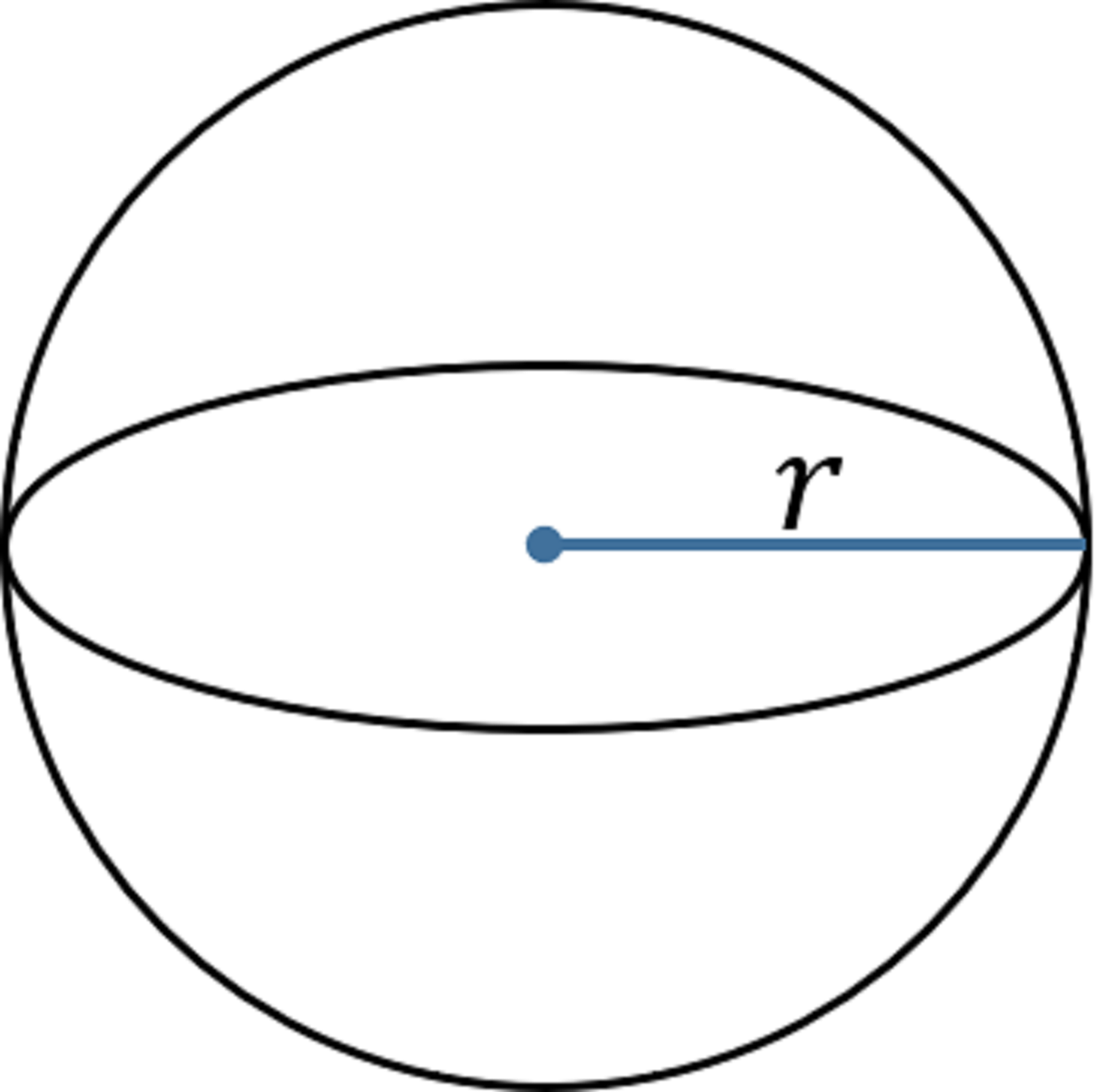Area of a Circle Calculator - Find the Area of a Circle
Result:
Our Area of Circle Calculator is a comprehensive tool designed to calculate the surface area of any circle using either the radius or diameter. Whether you're a student learning geometry, an engineer working on circular components, or a homeowner planning a circular garden, this calculator provides instant, accurate results with detailed step-by-step solutions.
Understanding how to calculate the area of a circle is fundamental in mathematics and has countless practical applications in engineering, construction, design, and daily life. From determining the amount of fabric needed for a circular tablecloth to calculating the coverage area of a sprinkler system, circle area calculations are essential skills in both academic and professional settings.
How to Use the Area of Circle Calculator
Our intuitive calculator makes finding circle areas effortless:
- Input Method: Choose whether you know the radius or diameter of your circle
- Enter Value: Input your measurement in the appropriate field
- Units: The calculator works with any unit (inches, centimeters, meters, feet, etc.)
- Calculate: Click the "Calculate" button for instant results
- Results: View the area along with all related measurements and formulas used
The calculator automatically converts between radius and diameter, providing you with complete circle information including area, circumference, and both radius and diameter values.
Understanding Circle Components
Before diving into calculations, it's crucial to understand the basic components of a circle:
Essential Circle Terms
- Center: The fixed point at the heart of the circle from which all points on the circumference are equidistant
- Radius (r): The distance from the center to any point on the circle's edge
- Diameter (d): The distance across the circle through its center, equal to twice the radius
- Circumference: The perimeter or distance around the circle
- Area: The amount of space enclosed within the circle's boundary
The fundamental relationship between radius and diameter is: Diameter = 2 × Radius or d = 2r


Circle Area Formulas Explained
There are two primary formulas for calculating circle area, depending on your known measurement:
Formula Using Radius
A = πr²
This is the most common and fundamental formula where:
- A = Area of the circle
- π (pi) ≈ 3.14159 (a mathematical constant)
- r = Radius of the circle
Formula Using Diameter
A = π(d/2)² or A = πd²/4
When you only know the diameter:
- A = Area of the circle
- π (pi) ≈ 3.14159
- d = Diameter of the circle
Step-by-Step Calculation Methods
Method 1: Using Radius
- Identify the radius: Measure from center to edge
- Square the radius: Multiply radius by itself (r²)
- Multiply by π: Use π ≈ 3.14159 for accuracy
- Calculate result: A = πr²
A = πr²A = 3.14159 × (6)²A = 3.14159 × 36A = 113.097 cm²
Method 2: Using Diameter
- Identify the diameter: Measure across the circle through center
- Find the radius: Divide diameter by 2 (r = d/2)
- Apply the formula: A = π(d/2)²
- Simplify: A = πd²/4
A = π(d/2)²A = 3.14159 × (10/2)²A = 3.14159 × (5)²A = 3.14159 × 25A = 78.540 square inches
Understanding Pi (π) in Circle Calculations
Pi (π) is one of mathematics' most famous constants, representing the ratio of a circle's circumference to its diameter. Key facts about π:
- Approximate value: 3.14159265359...
- Irrational number: Has infinite, non-repeating decimal places
- Universal constant: Same for all circles regardless of size
- Historical significance: Known and used for over 4,000 years
- Modern precision: Calculated to trillions of decimal places
For most practical calculations, using π ≈ 3.14159 provides sufficient accuracy. However, many calculators and software use the full precision value of π for maximum accuracy.
Reverse Calculations: Finding Radius and Diameter from Area
Finding Radius from Area
To find radius when you know the area: r = √(A/π)
- Divide the area by π
- Take the square root of the result
r = √(A/π)r = √(100/3.14159)r = √31.831r ≈ 5.64 meters
Finding Diameter from Area
To find diameter when you know the area: d = 2√(A/π)
- Divide the area by π
- Take the square root
- Multiply by 2
Common Circle Area Problems and Solutions
Problem Type 1: Basic Area Calculation
Problem: A circular swimming pool has a radius of 12 feet. What is its area?
Solution:
A = πr² = 3.14159 × (12)² = 3.14159 × 144 = 452.39 square feet
Problem Type 2: Diameter to Area
Problem: A circular pizza has a diameter of 14 inches. What is its area?
Solution:
A = π(d/2)² = 3.14159 × (14/2)² = 3.14159 × 49 = 153.94 square inches
Problem Type 3: Area to Radius
Problem: A circular garden has an area of 200 square meters. What is its radius?
Solution:
r = √(A/π) = √(200/3.14159) = √63.66 = 7.98 meters
Real-World Applications of Circle Area Calculations
Construction and Architecture
- Foundation Design: Calculating concrete needed for circular foundations
- Roofing: Determining material requirements for circular or domed structures
- Landscaping: Planning circular gardens, patios, and water features
- Infrastructure: Designing circular roadways and traffic circles
Manufacturing and Engineering
- Material Planning: Calculating sheet metal requirements for circular components
- Pipe Design: Determining cross-sectional areas for fluid flow calculations
- Quality Control: Measuring circular part specifications
- Cost Estimation: Pricing materials based on circular dimensions
Agriculture and Farming
- Irrigation Systems: Calculating coverage areas for sprinkler systems
- Crop Planning: Determining planting areas for circular fields
- Storage Silos: Calculating floor space and capacity
- Livestock Areas: Planning circular feeding and exercise areas
Home and Personal Projects
- Interior Design: Selecting appropriate sizes for circular rugs and tables
- Cooking: Understanding serving sizes for circular foods like pizzas and cakes
- Crafts: Calculating fabric requirements for circular sewing projects
- Pool Installation: Determining space requirements and material needs
Advanced Circle Area Concepts
Sectors and Segments
Sometimes you need to find the area of part of a circle:
- Sector Area: A = (θ/360°) × πr² (where θ is the central angle in degrees)
- Segment Area: More complex calculation involving sectors and triangles
Annulus (Ring) Area
For the area between two concentric circles:
A = π(R² - r²) where R is the outer radius and r is the inner radius
Tips for Accurate Circle Area Calculations
- Use Precise π Value: For high accuracy, use π = 3.14159265 or more decimal places
- Double-Check Measurements: Ensure you're measuring radius vs. diameter correctly
- Consider Significant Figures: Round final answers appropriately based on input precision
- Unit Consistency: Keep all measurements in the same units throughout calculations
- Verify Results: Use alternative methods or online calculators to confirm answers
Common Mistakes to Avoid
- Confusing Radius and Diameter: Always verify which measurement you have
- Forgetting to Square: Remember that radius must be squared in the formula
- Using Wrong π Value: Avoid using 3.14 when higher precision is needed
- Unit Errors: Remember that area is always in square units
- Calculation Errors: Double-check arithmetic, especially with large numbers
Other Similar Calculators
Check out other calculators that are similar to this one.
Practice Problems with Solutions
Problem: You want to create a circular flower garden with a radius of 8 feet. How much area will the garden cover?
Solution:
Given: radius (r) = 8 feet
Formula: A = πr²
Calculation: A = 3.14159 × (8)² = 3.14159 × 64 = 201.06 square feet
Answer: The garden will cover approximately 201.06 square feet.
Problem: A large pizza has a diameter of 16 inches. What is its area?
Solution:
Given: diameter (d) = 16 inches
Formula: A = π(d/2)²
Calculation: A = 3.14159 × (16/2)² = 3.14159 × (8)² = 3.14159 × 64 = 201.06 square inches
Answer: The pizza has an area of approximately 201.06 square inches.
Problem: A circular rug covers an area of 50 square feet. What is its radius?
Solution:
Given: Area (A) = 50 square feet
Formula: r = √(A/π)
Calculation: r = √(50/3.14159) = √15.915 = 3.99 feet
Answer: The rug has a radius of approximately 3.99 feet.
Frequently Asked Questions
Key Takeaways
- Essential Formula: Area = πr² is the fundamental circle area formula
- Alternative Formula: Area = π(d/2)² when working with diameter
- Reverse Calculation: r = √(A/π) to find radius from area
- Practical Applications: Used in construction, engineering, design, and daily life
- Precision Matters: Use appropriate π precision for your application
- Unit Consistency: Keep measurements in the same units throughout calculations
- Double-Check: Verify radius vs. diameter and square the radius properly
Find Calculator
Popular Calculators
Other Calculators
